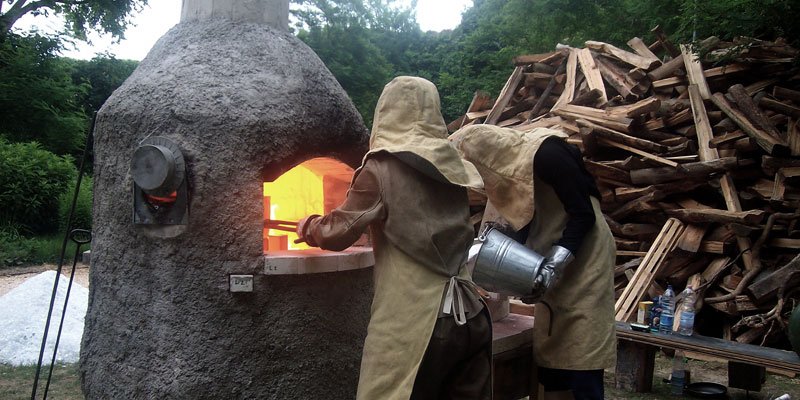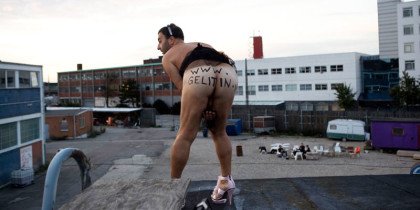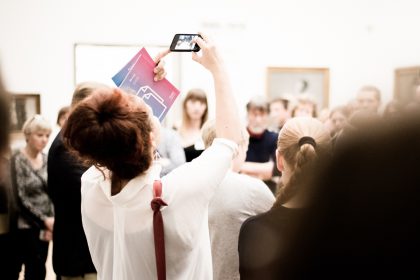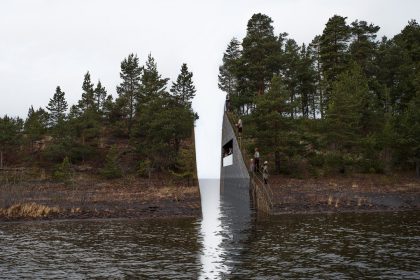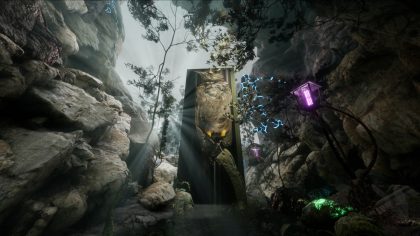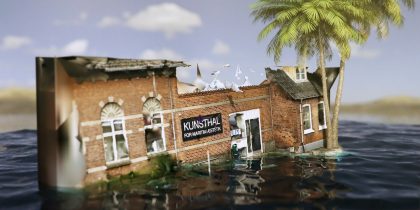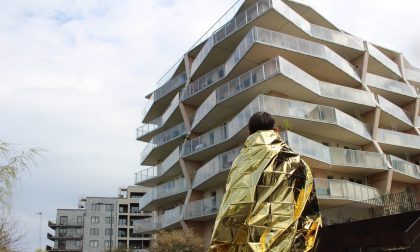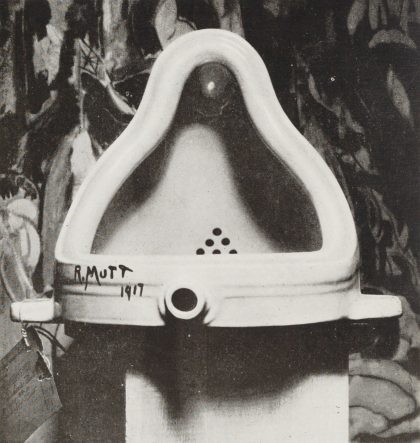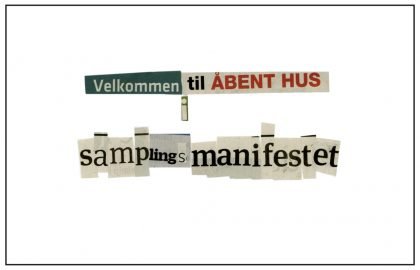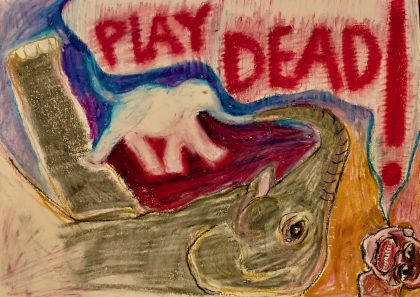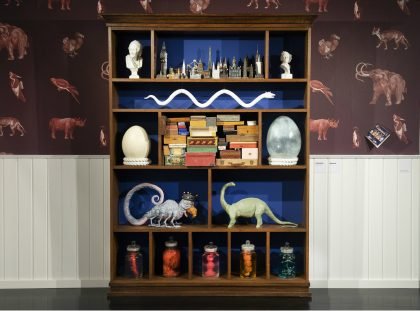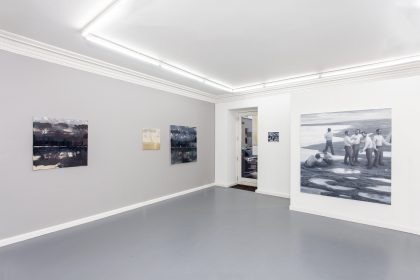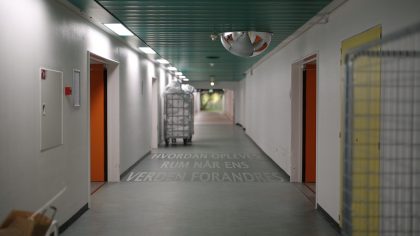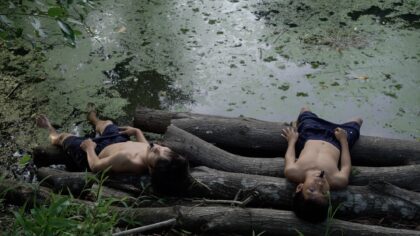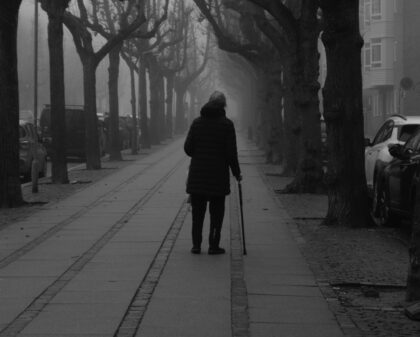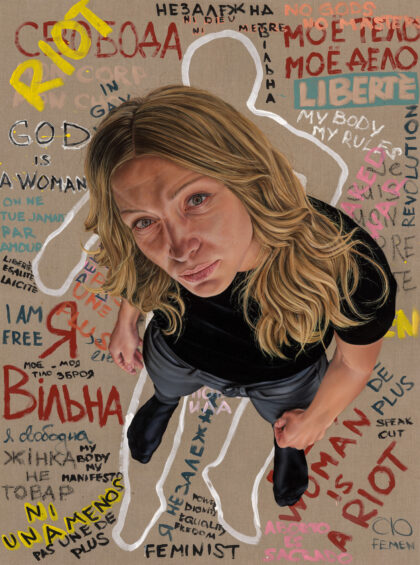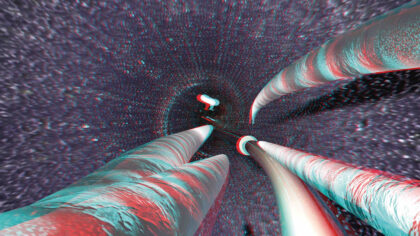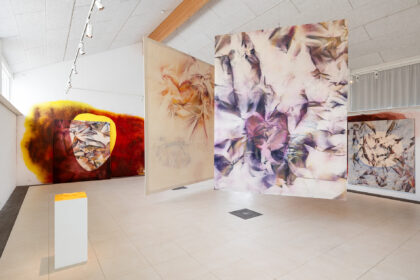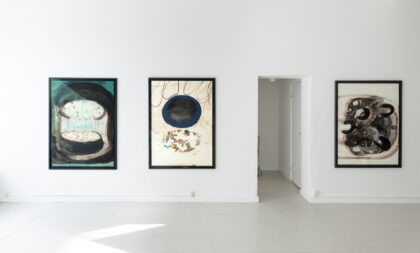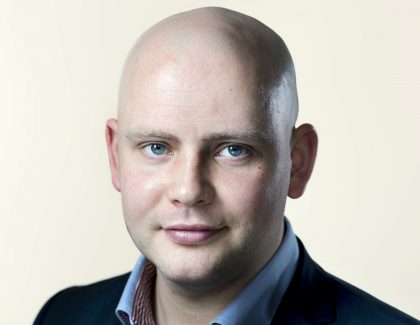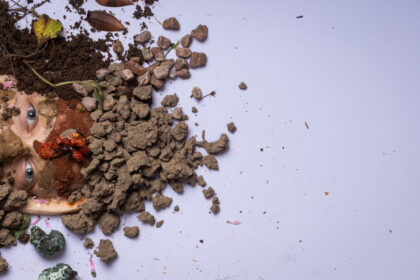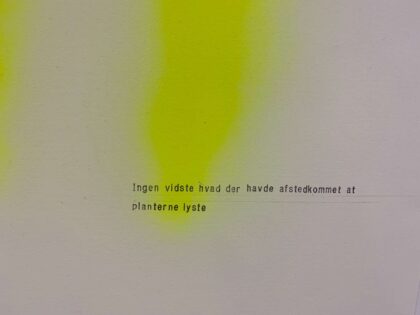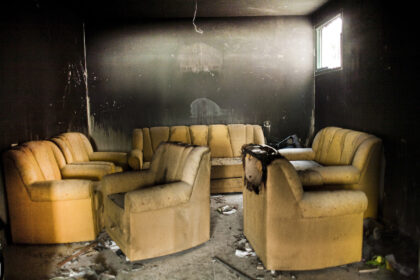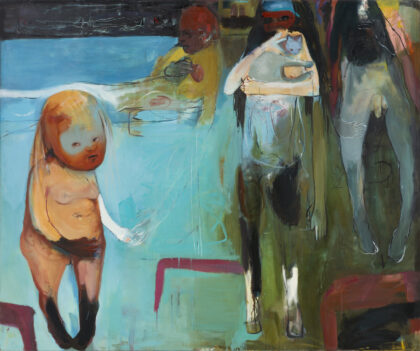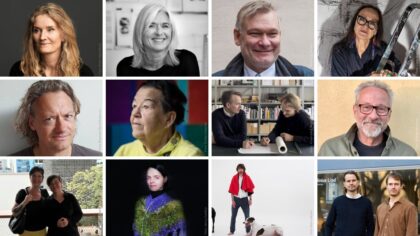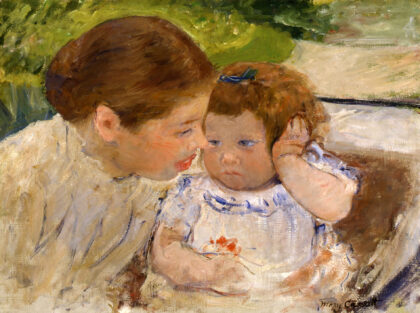Biennale
Venedig Biennalen: Para-Pavillon: GELITIN
4 jun 2011 27 nov 2011
GELITIN
Venedig Biennalen
Se kort og tider
On the back of their radical sculptural interventions, the Austrian artcollective Gelitin keeps building social formations using our bodies and their own as material. Meet Gelitin and become Gelitin at the Venice Biennale 2011.
Every time Ivisit Venice, the same thought or impression comes back to me: The city-stateof Venice is really a state of mind.
Spending thedays cruising back and forth in water-taxis and Vaporettos, everything seems toturn fluid and even back on land, the ground underfoot assumes a swayingcondition, as if still out at sea. A continuously increasing state of hangoverkicks in, that even by drinking more cannot be reversed. With every boat-ridethe boundaries of one’s own body seem to wear thinner and the state of the cityand one’s state of being become increasingly inseparable.
Out of your head, into your body
The way inwhich Venice relates to a state of mind or psychological condition is a veryphysical one, supported by the disorientating maze of bridges and canals andthe duality between its solid and its liquid elements.
No other cityin my experience raises a whole catalogue of questions about the city and ourrelationship to it in such a physical experiential way, as opposed to offeringthe conditions for solely intellectual reflection on the urban environment, onewould undergo in most other places.
In many ways,the work of Austrian artists Gelitin does something similar to the experienceof art, as does Venice to the experience of the city. Their often physicallychallenging installations take the viewer out of his/her intellectualreflective comfort zone by transgressing physical boundaries, in order to makethe art experience a wholly bodily one.

Total Osmosis
When Gelitinrepresented Austria at the Venice Biennale in 2001 it seemed to be the perfectmarriage. Their work entered a direct dialogue with the immediate surroundingsof the city. They chose to not put any art per se into the pavilion, butinstead break down the pavilion’s boundaries to be taken over by, or becomepart of the organism that is the city of Venice.
Under the title“Total Osmosis” they flooded the Austrian pavilion with water from the Venicelagoon and re-arranged found materials surrounding the pavilion into some sortof muddy garden-wasteland, that looked like no one had actually taken care ofthe Austrian pavilion at all. The art became invisible in a way, and a physicalexperience was emphasized as the art-crowd was invited to stagger acrosswater-puddles along wobbly planks of wood, testing the boundaries of many ahigh-heel or fine Italian leather-shoe.
In Gelitin’svery own genuine spirit of not demanding anything from their visitors, whichthey would not truly demand, or be part of themselves, they produced a seriesof photographs during the same time, which depicts the four of them jumping,falling, diving from bridges, windows and boats into the canals of Venice inall possible ways imaginable. Even if one wasn’t physically part of this event,the resulting images make for very exhilarating viewing. The pictures wereafterwards published by Walther König as a book titled “Nellanutella”.
The exciting and the terrifying
I first cameacross Wolfgang Ganter, Ali Janka, Tobias Urban and Florian Reither during alecture-performance, they gave about their “Schlund” in 2001 or 2002.
Schlund isGerman for gorge or throat, as in the part of the body that connects mouth tostomach. They were talking about a tower they had constructed or were planningto construct, that was put together from a group of greased up semi-naked fatpeople.
The visitor tothis tower, suggesting a gigantic Schlund, was invited to climb up to the top,strip down, grease up and slowly slither down between the mountains of wobblyflesh. It was recommended to keep one’s eyes shut, in order to suspenddisbelief.
The idea, letalone the actual experience of the Schlund, in its radical suggestion tore-think and re-experience one’s own body and it’s boundaries to other bodies,was equally exciting and terrifying to everyone involved – those sliding downbetween the bellies, those providing the bellies, and even those, like me, whowere only listening to the accounts of it.
The fact thatall Gelitin members had their testicles neatly sticking out of the front oftheir trousers throughout the whole talk seemed only normal, compared to whatwas being talked about.
Just one letter
Gelitin at thattime were usually referred to as Gelatin or Gelatine. I first noticed thedifference in spelling of their name in 2005, when they were working on their“Sweatwat” at the Gagosian Gallery in London. Over a bottle of wine, I askedWolfgang about the change in the name. “It’s just one letter”, he answered sortof zen-like, with his charming smile. “It makes no difference.”
How could thespelling of the label attached to your provided experience possibly matteranything at all, while you are busy sliding down between naked bellies, ordiving through rooms filled to the ceiling with empty plastic bottles, orsitting naked in a sauna-pod made from molten plastic waste-containers, (whilea semi-naked Cerith Wyn Evans plays the cello dressed only in garter-belts, upto his knees in dirty water inside a flooded gallery), or dancing in the“Armpit”, (the most intense clubbing experience ever), or while you aremarvelling at documentation of “The B-Thing”, a balcony attached to the 91stfloor of New York’s World Trade Center, to name just a few typical Gelitinexperiences.
Nowadays,you’ll find people referring to them equally as Gelitin or Gelatin and asWolfgang suggested: It doesn’t make a difference.

A Venice encounter
The Gelitin eventfreshest to my memory, of course, is the one at the opening of this year’sVenice Biennale.
After seeingJohn Giorno’s heart-warming performance one night at the magnificent HotelBauer and after more and more party and socialising, we have formed a late-night-gangstumbling through the alleys trying to find someone’s house.
Up the bridge,down the bridge – deserted streets of Venice at night.
Ahead we see ayoung man with a limp, slow pace, like nowhere particularly to arrive at, at noparticular time, supporting his step like an Englishman with a black umbrella.Straight blond spaghetti-hair into his sharp and handsome face, the over-sizedblack suit covering his skinny bones casually.
Lola, desperatefor a joint, chats him up:
Hey, where areyou showing?
Arsenale.
What’s yourname?
We are acollective.
What are youcalled?
Gelitin.
Where are youfrom?
Iceland.
Do you have ajoint?
I wish…
He lifts hishead to lock eyes for a long slow gaze of acknowledgement, then melts back intothe night, evaporates and blends into the maze of bridges and intersectingwater-veins.
The nature of Gelitin
The encounter was a reminder that Gelitin is indeed a much bigger organism thanfirst meets the eye. A significant aspect of the four Austrian artists’ workcan be seen in its quality of a loose international collective or network thatconsists of anyone, who ever came to witness or partake in any of their manyactions/events/interventions/exhibitions.
Sourced frombones and muscles of an animal body, once heated to liquid form, gelatin coolsdown again into a soft elastic consistency, clear like glass, transforming intoa living window with a view onto the parts it combines into a whole. We can seeall the fruit on the cake enhanced in colour and sheen, held together safely bythe almost invisible agent gelatin.
Gelitin shapesocial formations, using our bodies and their own as building material, joiningpeople together into collectively shared experiences and the resultingcollective memories.
The Heart of the community
We see ourIcelandic Gelitin again the next day at the Gelitin space at the very far endof the outdoor area of the Arsenale. After having fought our way through theseemingly endless halls of this year’s Biennale’s main exhibition, theremoteness of Gelitin’s area has the quality of something like an oasis after along walk through the desert.

The space isopen and yet immediately intimate. Like at some tribal, festival-likegathering, reminiscent of images of the happenings of the 60’s, people aresitting and lying around in a circle drinking wine, relaxing and generallyhaving a good time, not having to look at art but instead being part of thetransformative joy of an art-process happening in their presence.
The circle ofpeople is formed around a hot glass-melting kiln, which is attended by two menin industrial safety-suits, heat-protecting every part of their bodies, crownedby big hoods with dark windows in front of their faces.
The kiln as anindustrial production device, which usually would be hidden away in a remotefactory at the edge of town, takes on a new significance here, in its centralposition as a campfire at a social get-together, or the kitchen stove in oldendays to sit around and share stories, song and wine: It becomes the glowingheart of the community.
The wood-fired oven
Our encounter of the previous night has gotten rid of his over-sized suit andchose not to wear anything at all today, apart from a big tattoo-like drawingon his back, representing a cartoonish female figure riding a sausage-dog withthe letters “Nobody’s Fool” across his shoulders. The drawing is reminiscent ofthe work of, or possibly even done by the Japanese artist Yoshimoto Nara.
In thebackground there is another half-naked young man fashioning drawings on hisbody, busy crushing glass bottles in a metal container with the help of a bigwooden log. The crushed glass-mix is continually being fed into red-glowingvessels inside the hot furnace. At certain intervals the men in safety-outfits,open the fiery mouth of the kiln, remove the molten glass and pour the glowingred substance onto the ground and let it run freely into the greensummer-grass.


The glassindustry has a long tradition in Venice, most famously the manufacture of Muranoonly a short boat-trip away. However, at this point Gelitin’s kiln is the onlywood-fired oven on the main island. All other glass-melting facilities havebeen moved over to other islands to minimise the inherent threat of firesbreaking out. Apparently there is not even a single wood-fired pizza-oven inthe city of Venice. How Gelitin repeatedly manage to suspend health and safetyregulations for their work is another mystery attached to their practice.
Sheets ofgelatin give up their solid form at 35 degrees Celsius. Glass needs around 1400degrees Celsius to turn liquid.
To reach theextreme heat needed to melt glass, Gelitin’s furnace at the Arsenale needs tobe fired around the clock. A group of fire-keepers live inside a pile of wood,the size of a small house, which sits patiently on the site, graduallyshrinking, as it is being transformed by fire into energy and heat and finallyinto liquid glass.
With gelatin onjellied foods as with melting glass in a kiln, we witness an alchemic processof transformation: Original form – energy in form of heat – change of aggregatestate – cooling down – new form.
Alchemic process
Every creativeprocess underlies essentially the same transformation from one or severalmaterials into a new one, or from a mere idea into material manifestation.Every so often the men operating the furnace take out the liquidised glass andpour it right next to it onto the ground.
Gradually anorganically shaped puddle, then pile is forming, with the unformed glass continuouslycracking as it slowly cools down to the surrounding temperature. The glass,freed from the shackles of Murano, is left alone to find its own shape, farfrom being forced into functional or representational artifices such aschandeliers or little poodles or swans.

As the oven iskept alive at high temperatures, generating huge amounts of energy and theliquid result is spat out into the grass, like a digested lunch from a humanbody, people are hanging around, being part of the transformative process asthey are watching other artists and friends of Gelitin offering performances ofmusic or performances of just their radiating individual selves.
Several bandsand sound artists are playing. Amongst them a quite impressive Elvisimpersonator, approximately 1977 Las Vegas, who bellows out the king’s tunes,relying only on voice and costume without any backing music. The whole placeserves as a stage that knows no separation from the audience, where everyone ison-stage at all times and becomes a significant part in the creation of thewhole.

When I ask Ali,as we are lying in the grass being washed over by the beautiful drum andguitar-noise of Brooklyn’s own Japanther, what motivated them to melt glass, heanswers happily:
“You know,we’ve always wanted to melt glass.” And Wolfgang added: “It is kind of beautiful, isn’t it?”
Someone opens alid on a deep hole dug into the ground and fishes out a bottle of wine, whichseems to be the oil that keeps the social machinery running smoothely.

After anyGelitin event comes to an end and everyone goes their own ways again, theartwork lives on and grows further in an ephemeral form through the stories,myths and rumors that are created by people sharing their experience andmemories worldwide.
You’ll hearstories about Gelitin events that sound highly unbelievable. This ambiguitybetween reality and myth that follows the actual events is another of Gelitin’sactive territories, where the art takes place in stirring up our imagination,even if we haven’t witnessed the actual event. The border between truth andfiction is an osmotic membrane like the wall of a body-cell.
If Gelitin’s Work at this year’s Venice Biennale had a title, I neverbothered asking anyone, since Wolfgang would probably reply again in hischarming way: ”It does not matter.”
Biennale
Venedig Biennalen: Para-Pavillon: GELITIN
4 jun 2011 27 nov 2011
GELITIN
Venedig Biennalen
Se kort og tider

